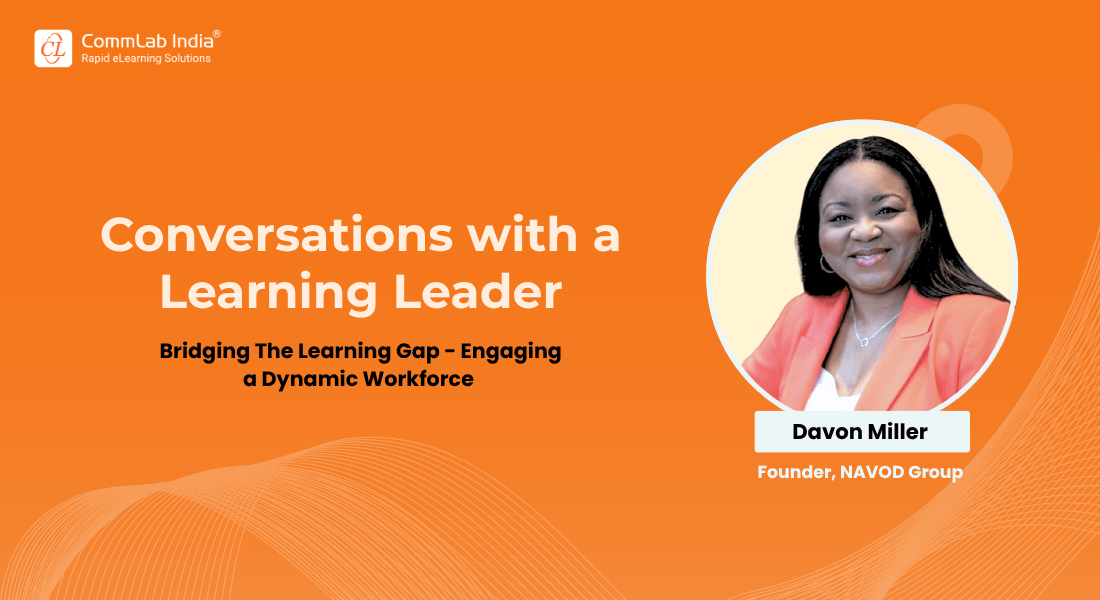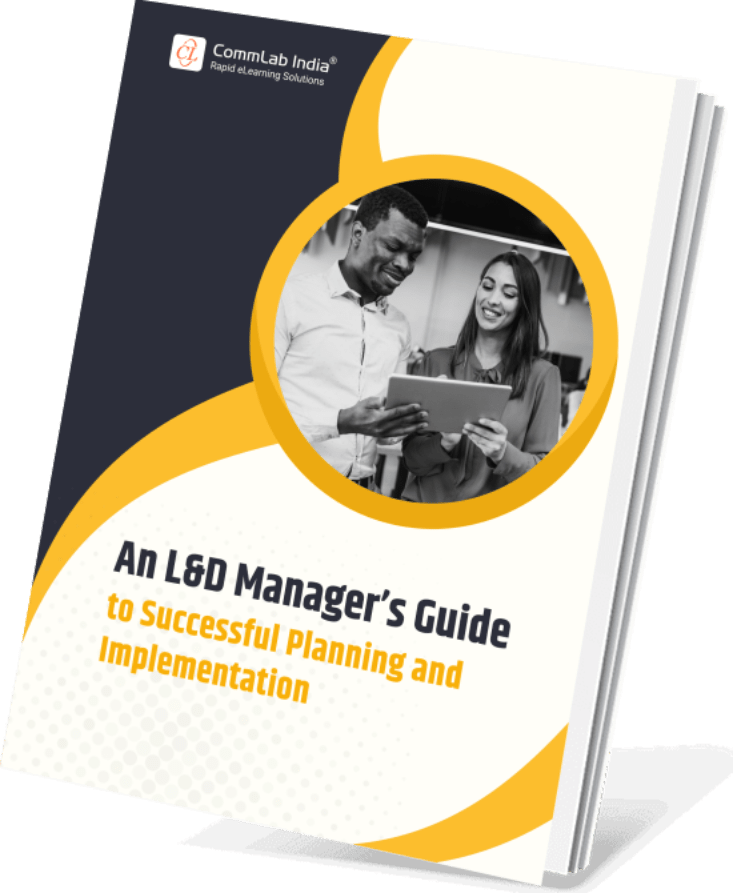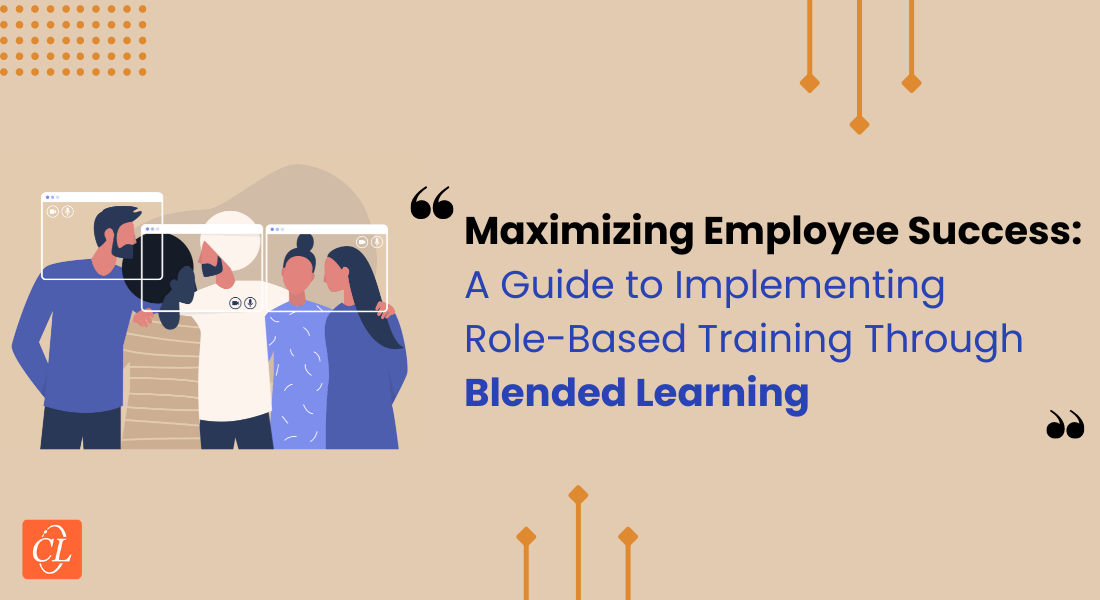Bridging The Learning Gap: Engaging a Dynamic Workforce— Podcast Excerpt

Generic corporate training? Yeah, that’s not it. With multiple generations, diverse cultural backgrounds, and unique learning styles in the workplace, creating employee training and development programs that truly engage everyone can feel like an uphill battle. How do you make sure no one gets left behind, especially when what motivates one group might not resonate with another?
The reality is, disconnected employee training leads to disengaged employees, and that can cost your business more than you realize. But don’t worry, there’s a way to bridge this gap and create learning experiences that connect with a dynamic workforce. How can you design training programs that truly connect with everyone, regardless of their background or learning style? Ready to create a more engaged team? Let’s explore!
→ Download eBook: An L&D Manager’s Implementation Guide
This episode of CommLab India’s eLearning Champion podcast features Davon Miller, founder of NAVOD Group, as she delves into practical strategies for closing learning gaps and engaging today’s diverse workforce. Drawing from her extensive experience creating training programs for teams worldwide, from entry-level staff to senior executives, Davon shares actionable insights on designing learning content that connects across generations, cultures, and learning styles.
Tune into the podcast for interesting and actionable insights!
Table Of Content
- Why L&D Needs a Rethink?
- What does Conscious Content Creation Mean?
- How Can You Pre-Assess Instead of Assuming?
- How can Flexibility Improve Global Teams?
- How does AI and Feedback Enhance Corporate Training?
- Why is Inclusion Essential in L&D?
- How Well Do You Know Your Learners?
Why Learning & Development (L&D) Needs a Rethink
Traditional corporate training often falls flat. Generic content, one-size-fits-all approaches, and lack of engagement leave learners uninspired and disengaged.
But what if learning content could do more? What if it could truly speak to your learners meeting them where they are, understanding who they are, and recognizing their unique skill levels and goals? Imagine a modern corporate training experience that feels personal, relevant, and impactful.
That’s the vision Davon brings to life through the concept of “conscious content creation.” It’s about crafting learning experiences with intention, content designed to resonate with diverse audiences while addressing real-world needs. It’s not just about teaching; it’s about connecting and empowering learners to grow in ways that matter to them. This thoughtful approach redefines how we think about Learning & Development (L&D), ensuring every piece of content is meaningful, inclusive, and transformative.
It’s not just about what they need to know. It’s about how we make them care.
Conscious Content Creation: What It Really Means
The Art of Conscious Content Creation: What It Truly Means
Design with intention by considering both:
- Known differences (e.g., geography, language, time zones)
- Unknown differences (e.g., learning styles, generational habits)
Training isn’t a one-size-fits-all solution. For L&D professionals, designing training courses with intention requires a thoughtful approach that addresses both visible and invisible differences among learners.
Known Differences
These are the factors that are easy to identify and account for, such as geography, language, and time zones. For instance, a training program designed for a global workforce must consider cultural nuances, offer multilingual support, and provide flexible access to accommodate participants in different time zones. Ignoring these aspects can alienate learners or hinder their ability to fully engage with the material.
Unknown Differences
These are the deeper, less obvious factors that often go unnoticed but can significantly impact the effectiveness of training. Learning styles, for example, vary widely; some individuals prefer hands-on experiences, while others learn best through visual aids or written instructions. Similarly, generational habits can influence how learners interact with technology or engage with content. Younger learners might prefer microlearning through mobile apps, while older generations may benefit from structured, in-depth sessions.
By consciously addressing both known and unknown differences, L&D professionals can create learning experiences that resonate with diverse learners, fostering inclusivity and maximizing the impact of their corporate training programs.
Pre-Assess, Don’t Assume
Before creating a training course, lean on:
Pre-assessments
Conduct surveys or quizzes to evaluate the current knowledge and skills of learners. This helps you identify areas that need the most attention and tailor corporate training accordingly.
Focus groups
Bring together a diverse group of learners to discuss their challenges, expectations, and needs. These sessions provide valuable qualitative insights that may not surface through data alone.
Conversations with managers and learners
Managers can offer a broader perspective on team performance and objectives, while learners can share their personal experiences and specific pain points. Together, these conversations create a well-rounded understanding of the training requirements.
This approach uncovers learner needs and invisible gaps early.
“Your KPIs are your compass. They guide content, not the other way around.”
Global Teams? Flexibility is the Secret Sauce
Imagine training teams spread across Hawaii and the Philippine, two locations with a 6 to 12-hour time difference. It’s not easy, right? This is where flexibility in corporate training becomes a game-changer.
To truly engage a dynamic, global workforce, training needs to meet people where they are, both in location and learning needs. Offering on-demand sessions, asynchronous learning options, and tailored schedules bridges the gap between time zones, ensuring no one is left behind.
By adapting to the unique challenges of global teams, companies can foster collaboration, enhance knowledge sharing, and create a seamless learning experience that unites everyone, no matter where they’re clocking in from.

Role-Based + Blended = Magic Formula
In corporate training, a one-size-fits-all formula no longer works. By combining role-specific training with a blended learning approach—incorporating in-person, online, and self-paced methods, you create space for learners to:
- Absorb
- Revisit
- Practice
- Reflect
Even better? Gamification + Roleplay + SMEs.

AI + Feedback = Smarter Corporate Training
AI can analyze employee performance, learning patterns, and engagement levels to identify what works and what doesn’t. Feedback, both from learners and trainers, complements this by offering real-world insights into specific needs and areas for improvement.
Here’s how to make the most of AI-powered corporate training:
1. Use Analytics Tools to Track Success
Leverage AI analytics to measure training outcomes, identify skill gaps, and assess ROI. Metrics like completion rates, assessment scores, and engagement levels can guide future training strategies.
2. Personalize Learning Pathways
AI can create tailored training programs based on individual performance, ensuring employees get the resources they need to succeed.
3. Encourage Feedback Loops
Incorporate regular feedback from participants to refine training content and delivery methods. AI can process this feedback to suggest actionable improvements.
4. Focus on Skill Development
Use AI insights to prioritize training on in-demand skills that align with company goals, ensuring employees are prepared for future challenges.
By combining AI with actionable feedback, corporate training becomes smarter, more efficient, and better aligned with both employee growth and business objectives.

An L&D Manager's Guide to Successful Planning & Implementation.
Learn:
- What Challenges do L&D Managers Face?
- How to Align Business and Project?
- How to be a Learning Consultancy?
- DOWNLOAD NOW!
Inclusion Isn’t Optional in L&D
Accessible, inclusive design matters.
Use friendly visuals to ensure clarity
Not everyone perceives colors in the same way, so designing visuals that work for color-blind individuals is crucial. Avoid using color as the only way to convey information; use patterns or labels to differentiate. This ensures that everyone, regardless of how they see color, can fully understand the content.
Provide audio and captions for all training videos
Many learners rely on alternative methods of accessing information. Captions support those who are deaf or hard of hearing, while quality audio narration helps learners with visual impairments. Additionally, captions benefit non-native speakers and allow for better comprehension in noisy environments or silent settings.
Choose font styles and spacing that support learners with disabilities
Legibility is key for learners with dyslexia or visual impairments. Use sans-serif fonts like Arial or Verdana, as they are easier to read. Provide ample spacing between lines and letters to reduce visual clutter and make reading less overwhelming for all learners.
Know Your Learners Like You Know Your Product
Closing the learning gap requires more than just great content—it takes a deep understanding of your audience. When you truly listen to your learners, you create training that resonates, engages, and inspires action. As one learner put it, "When we see ourselves in the training, we show up, speak up, and skill up." By bridging the gap with thoughtful, learner-centered strategies, you're not just building skills, you’re empowering a workforce ready to tackle whatever comes next.
Ready to take your learning and development strategy to the next level? Download this handy guide and explore strategies for planning, designing learning journeys, and implementing impactful learning solutions that drive real results.



![5 Sure Shot Tips to Ace Customized Training [Infographic]](https://blog.commlabindia.com/hubfs/customized-training-tips-infographic.jpg)

